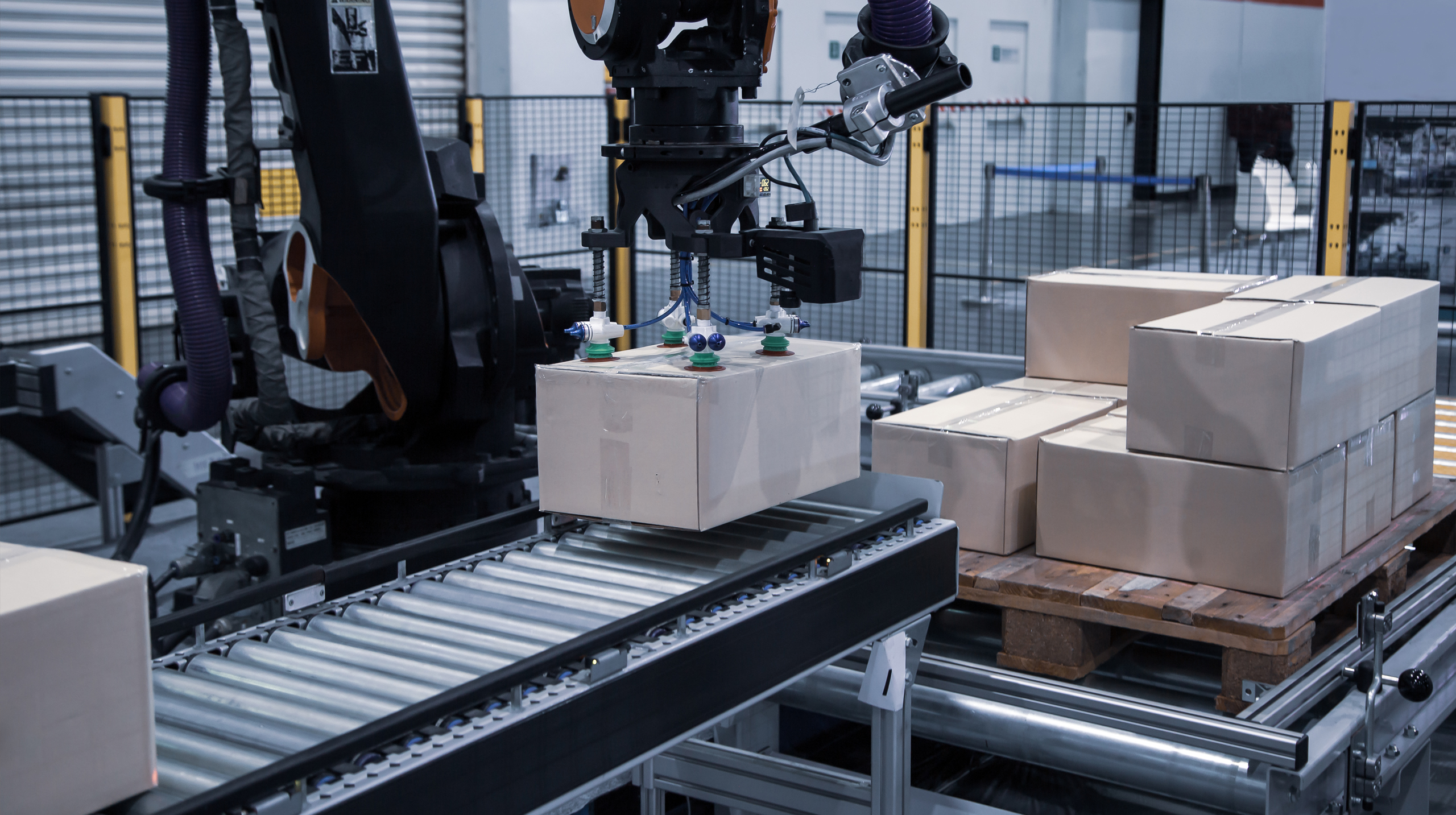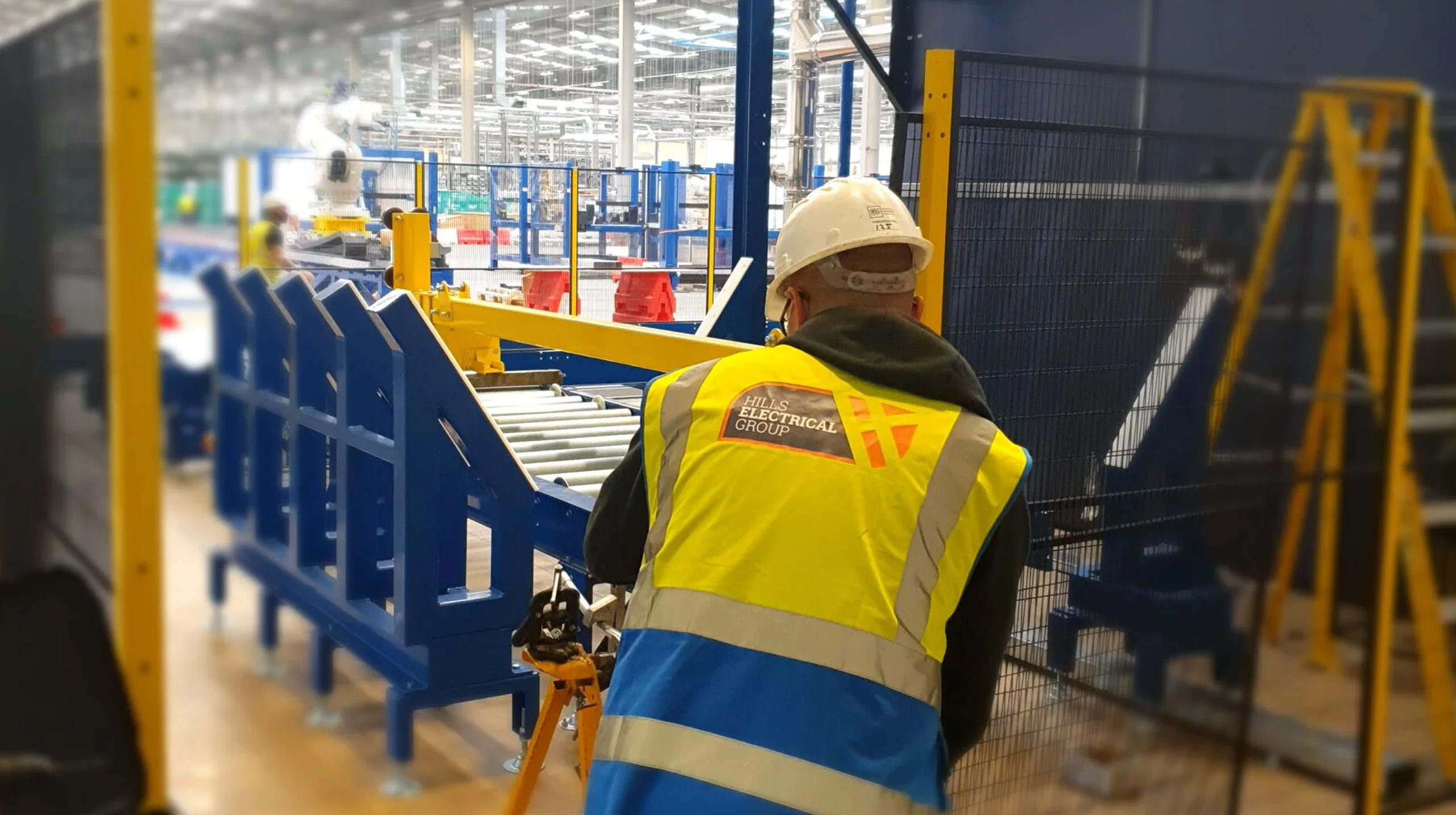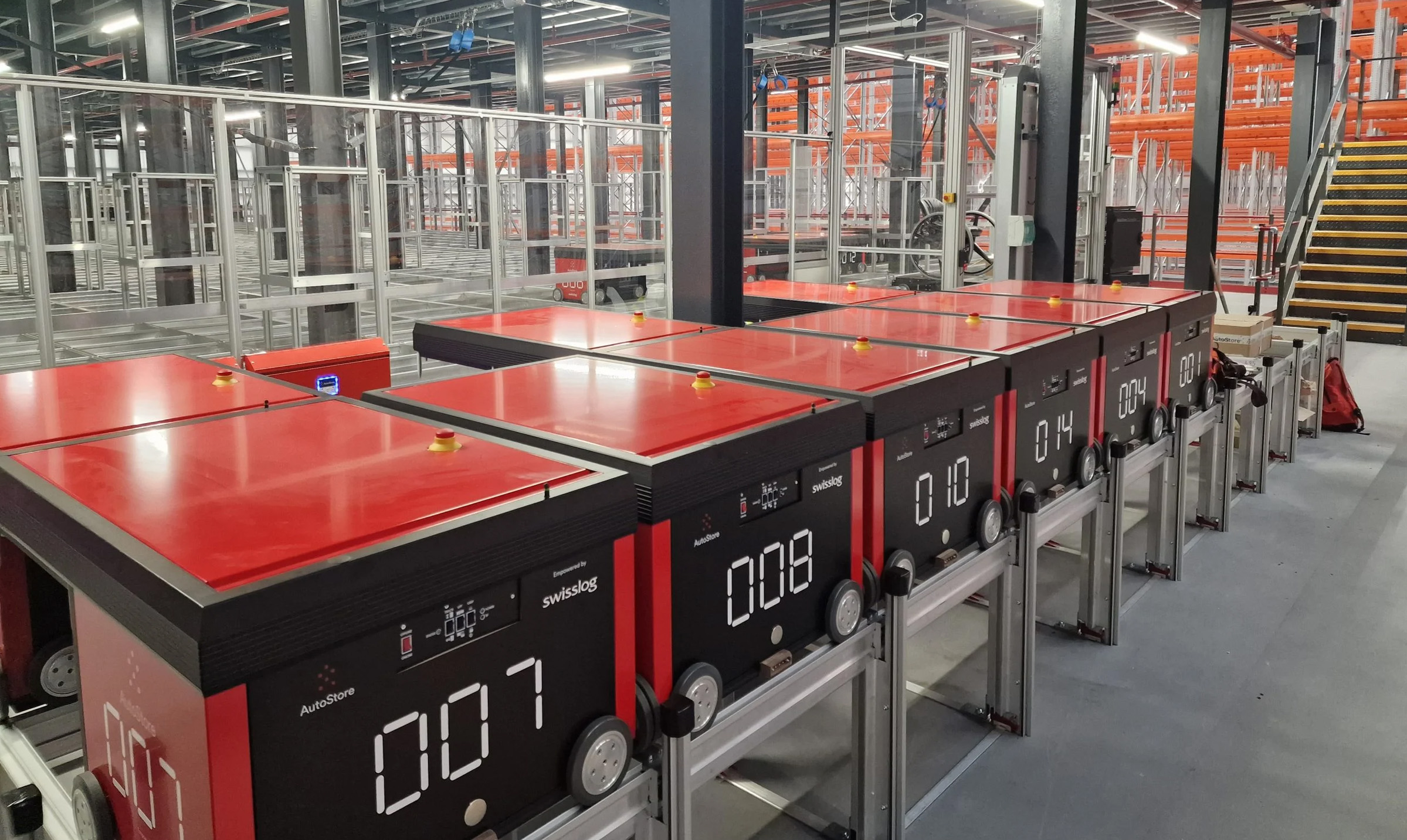We Are Now Autostore Installation Certified
Speak to a member of our team
Get in TouchDiscover what makes a roller conveyor an effective, efficient and essential component for production and manufacturing. From powered to gravity roller conveyors, find out which system best suits your business.
Conveyor systems play a crucial role in automated manufacturing and warehouse operations. As material handling machinery, they have the simple but integral purpose of transporting various components from one place to another.
For this most simplistic yet essential function, conveyor systems reign supreme across all production areas worldwide. In 2020, the global conveyor market was worth $8.8 billion, with its value set to rise to $10.6 billion by 2025.
Of the various conveyor systems available, such as ‘belt’, ‘robotic’, and ‘overhead’, the roller conveyor is one of the most popular for its versatility and effectiveness. But is it the right choice for your business? Let’s explore.
A roller conveyor system consists of rollers fitted within a structured frame to allow objects to move with ease and efficiency.
Roller conveyor machinery can function manually, by gravity or be motor-powered. Powered roller conveyors are just another form of conveyor belt which uses rotating cylinders (rollers) to enable components to travel across the surface seamlessly and safely.
Generally found in warehouse environments, a roller conveyor is particularly useful for moving solid and sturdy objects such as containers, cardboard boxes, crates, pallets and trays.
Providing fast and safe methods for handling large volumes of objects, roller conveyors play a key role in production operations.
Various roller conveyor systems, such as powered roller conveyors and gravity roller conveyors, can be seen in operation across multiple industries, such as:
Roller systems have existed since the first documented accounts from history. The ability to transport large and bulky objects has always been a priority throughout human history.
Despite modern manufacturing booming globally towards the latter half of the 20th century, roller conveyors date back centuries ago, aiding in ancient constructions and transportation of the pyramids in Egypt and Stonehenge in England.
However, it wasn’t until 1908 that the first patent for a roller conveyor was passed by Hymle Goddard.
It didn’t take long for the conveyor to be adopted by Henry Ford in 1913 when modern manufacturing made its mark with the established assembly line, a symbol and keen contributor to the “roaring twenties” that followed.

There are many benefits of investing in a roller conveyor system at your warehouse or commercial premises:
There are a few variations for roller conveyors. However, all share the same function of enabling the ease of transportation for goods and products. The types of roller conveyors include:
As you can guess from the name, a gravity roller conveyor system uses gravity to transport goods rather than manually or motored source of power.
Usually suited to lighter and medium-weighted cargo, most gravity roller conveyors have a simple frame design, made from aluminium, steel or plastic. You can purchase gravity rollers with accessories, such as curves, supports, hanging brackets, slide rails and stops.
Gravity rollers are an economically friendly conveyor solution and are suitable as temporary alternatives.
A belt-driven roller conveyor uses a belt powered system to power the rollers. This conveyor roller solution grants operators the luxury to control the speed and power of the objects.
Belt drive roller conveyors can stop items when necessary and can be straight, curved or customisable to the environment. When a belt conveyor has the rollers higher than the frame, it can support cargo wider than the frame itself.
This type of roller conveyor is suitable for medium to heavy loads, provided the belt is well-maintained and free from debris, moisture, objects and excessive heat.
Like a belt-driven roller conveyor, a chain-driven roller conveyor uses a chain system to power the rollers instead of a belt. Chain roller conveyors are particularly useful for transporting heavy loads.
Another variant of a powered roller conveyor is a line shaft roller conveyor, where each roller is spun via a rotating shaft beneath. Drive spools will function under minimal pressure, enabling individual rollers to stop without influencing others.
Well suited to medium to light duties, line shaft rollers can also operate as single or curved frame structures for increased efficiency and convenience.
The distinctive quality of a zero-pressure roller conveyor is how it prevents items on the conveyor to make contact. Sensors and motors create buffer zones in specific areas of the conveyor roller system.
Despite intricate electrical components, zero pressure designs still maintain efficiency and productivity.
Hills Electrical has been serving businesses with reliable and state-of-the-art conveyor roller systems for the past ten years.
We pride ourselves on being a trustworthy company and endeavour to exceed our clients’ expectations by providing custom roller conveyor systems that can fit their working environment perfectly.
If you’re on the market for a roller conveyor system, get in touch with us today. We’ll take the time to ensure you receive the perfect solution for your premises.
In the meantime, follow us on LinkedIn to stay up to date with the latest conveyor systems updates and any other electrical production and manufacturing news.




Feel free to fill out our form below and a member of our team will be in touch.